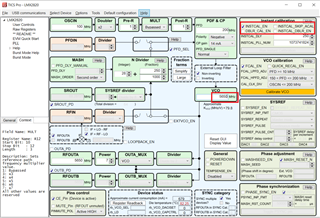I think this is the third or forth post from me on getting instcal to work, and while we have found workarounds, it has been very problimatic.
Instcal fails 10% of the time when a PDF of 200 MHz is selected. we have not seen a failure with a 50mhz PDF.
Once it has failed, we have not found a way to recover except to cycle the power to the device.
Is there a way to recover from a failed instcal without cycling the power to the device.
We define an instcal failure as where some frequencies will not lock, with the oscillator slightly off or railed.
Please advise.


